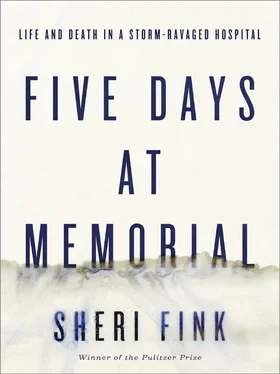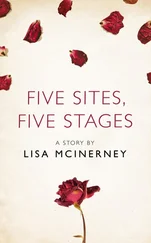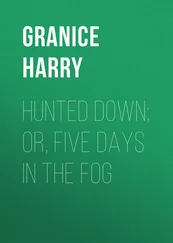As doctors began to rely more on machines and focus more on business, Baltz worked to remind his Baptist Hospital colleagues of the ethical tenets of their profession. As medical staff president, he urged them to stay compassionate and be selective about adopting new technologies. Baltz encouraged the establishment of an ethics group at the hospital and participated in a discussion of groundbreaking cases, including that of fifty-eight-year-old Clarence Herbert, a comatose patient whose doctors were tried for murder in Los Angeles after they withdrew his life support and IV fluids. The investigation followed from a nurse’s complaints, an indication that difficult end-of-life decisions could create fissures between doctors and nurses. Family members also alleged that doctors had misrepresented Herbert’s chances of recovery so they would agree to withdraw life support. The charges against the doctors were ultimately dismissed. “The ways and means of dying must be carefully considered,” Baltz commented in the newsletter.
Over the years, Baltz continued the dialogue with colleagues. LifeCare leased the seventh floor of the main building in 1997, establishing the long-term acute care hospital within the main hospital. A Medicare payment change created incentives for these types of business arrangements, and they proliferated at hospitals around the country. Baltz engaged in spirited debates over coffee with colleagues who believed excessive resources were being poured into LifeCare’s typically elderly, infirm patient population. “We spend too much on these turkeys,” one of them said. “We ought to let them go.”
“You have no right to decide who lives and who dies,” Baltz would answer. Through these conversations, he learned that some of his fellow doctors adhered to what Baltz thought of as the “Governor Lamm philosophy.” In 1984, at a time of growing budget deficits and ballooning medical costs, Colorado governor Richard Lamm criticized the use of expensive, high-tech medicine to keep some patients alive almost indefinitely, regardless of their age or prognosis. At a meeting of the Colorado Health Lawyers Association, Lamm bolstered his argument by citing a recent critique of antiaging research penned by the prominent University of Chicago bioethicist Dr. Leon R. Kass. “We’ve got a duty to die,” Lamm said, “and get out of the way with all of our machines and artificial hearts and everything else like that and let the other society, our kids, build a reasonable life.”
Lamm’s words were picked up by an attentive Denver Post reporter and caused a nationwide furor. With the appearance of crash carts and the expansion of intensive care medicine in the 1960s and ’70s, hospitals had become adept at keeping sick people alive longer. Medicare covered the new technologies regardless of cost, and by the 1980s some policymakers worried about the projected growth in medical spending. Lamm’s comments awakened the public to the problem and demonstrated the tension between the “business motive” and medicine’s burgeoning end-of-life dilemmas.
Lamm’s rationing directive rankled for many reasons. To limit life-saving care would be to deny the human impulse to rescue individuals in extremis. To handicap the race for new treatments that might prolong life would be to call off the eternal search for the elixir of immortality.
Plus it would be bad for capitalism. At the time, the US-Soviet war urge was sublimated into battles for technological innovation. We were going to the moon. Why not also cure cancer or raise the dead?
Also the relatively recent eugenic and Nazi subversions of science and medicine—their conceptions of “lives not worth living” and the sick logic of ridding society of certain of its members to enhance the perceived health of the larger body—had ingrained in Americans an aversion to assigning lower values to certain lives.
On the other side, with drug and device developers figuring out how each organ that threatened to quit could be repaired or replaced, the practice of life support surged ahead of the practice of relieving pain, both physical and existential. Patients weren’t given much of a say in how much of this new medicine they really wanted if they became critically ill and unable to speak for themselves.
And there were deeper, more unsettling questions. How now to define death? When was it permissible, even right, to withhold or, more wrenchingly, withdraw life-sustaining care? For a few weeks after a reporter cast Lamm’s remarks before them, regular Americans looked these questions in the eye.
They quickly looked away.
BALTZ LEARNED of Anna Pou soon after her arrival at Memorial in the fall of 2004. One of his patients had developed a pouch in the esophagus that trapped food and caused problems eating and swallowing. It was Pou’s turn to do ear, nose, and throat consultations, and Baltz asked some of the nurses about her. Who was she? What was she like? They raised their eyebrows. From what little they volunteered, Baltz guessed that they considered Pou a loose cannon, someone to avoid.
When Pou came to see Baltz’s patient, she didn’t merely offer her opinions. From Baltz’s perspective, she took over like a commander and failed to discuss important aspects of his patient’s care with him. Baltz judged her competent, but lacking in finesse. After the incident, he took it upon himself to give her some constructive criticism. He made it a practice to improve the work of those around him, especially younger, newer doctors. Pou seemed to listen to him.
After having spent seven years in Galveston, it would have been a challenge adjusting to the culture, etiquette, tools, and systems of any new hospital. When Pou was passionate about something, whether or not she was right, she stated her beliefs as unequivocally as a partisan talk-show host. Projecting surety was a defensive skill some doctors developed during their training, when attendings “pimped” them, barraging them with tough questions before their peers during rounds. Often, too, patients and families wanted clear answers when there weren’t clear answers to give.
One day, Pou cornered the nurse in charge of her postsurgical patients at Memorial. “We can’t have this!” she said. The previous night, one of her patients had become confused after surgery. Nurses caught him trying to get out of bed and pulling at the breathing tube in his neck. A nurse had paged the medical resident on duty to order a set of soft, loose cuffs with long straps. The nurses tied the straps to the bed and placed the soft cuffs on the man’s wrists. This would limit his movements and keep him safe until he was less agitated. When Pou arrived the next morning and saw her patient restrained, she was unhappy. She told the head nurse to ask a hospital risk manager for workers who would sit at the patient’s bedside twenty-four hours a day and watch him to make sure he was safe without the restraints. It was an unusual request. It earned Pou respect from the nurse in charge. To her, it meant that Pou had compassion for her patients.
Unlike many surgeons who manifest their authority by getting ugly or impatient in the operating theater, Pou was methodical and explained things carefully to residents and nurses. She had a way of speaking like a schoolteacher, enunciating her words to draw out each syllable and nodding her head for emphasis.
Perhaps more than anything it was the type of patients Pou cared for that impressed those around her. These patients were dealing not only with cancer, but also the way it deformed their faces. Some coughed and sputtered and had a hard time speaking. Pou split her time between several hospitals. At Charity, she created a clinic for low-income patients with head and neck cancers to receive advanced treatments and reconstructive surgery. She convinced an array of doctors and therapists to provide these services without receiving additional pay.
Читать дальше













